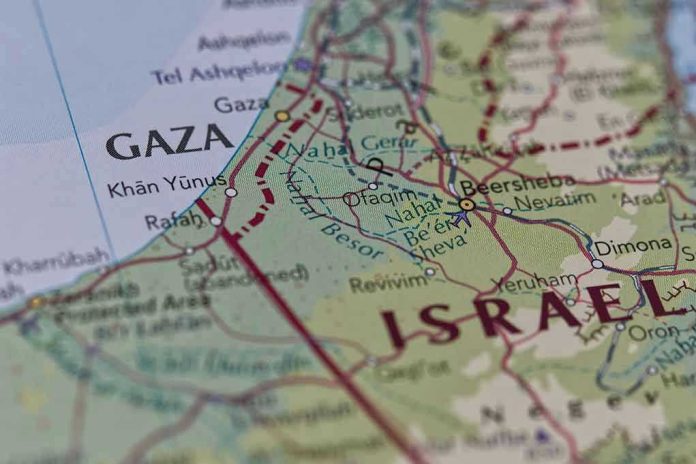
Israel’s renewed ceasefire sparks skepticism as over 100 fatalities follow recent airstrikes in Gaza, testing the stability of a U.S.-led peace initiative.
Story Overview
- Ceasefire reinstated after over 100 killed in Israeli strikes.
- Part of a U.S.-brokered peace plan aimed at long-term stability.
- Violence highlights the fragile nature of the ceasefire agreement.
- International efforts continue amid humanitarian concerns.
Ceasefire Reinstatement and Its Challenges
On October 19, 2025, Israel announced that a ceasefire was back in effect following a period of intense airstrikes that resulted in over 100 casualties in Gaza. This ceasefire is part of a broader U.S.-led peace plan negotiated by President Trump and Israeli Prime Minister Netanyahu. Despite the reinstatement, the ceasefire’s fragility is evident, as both Israel and Hamas have accused each other of violations. The situation underscores the complex and volatile nature of achieving lasting peace in the region.
The peace initiative aims to establish a long-term framework for peace and reconstruction, featuring unprecedented steps like an international stabilization force and transitional governance. However, the recent violence, including the deadly Israeli airstrikes, raises questions about the ceasefire’s durability and both sides’ commitment to peace. The international community remains divided, though the U.S. continues to lead diplomatic efforts to stabilize the situation.
Historical Context and Stakeholder Dynamics
The Gaza conflict traces back to long-standing Israeli-Palestinian tensions, with significant events such as Hamas’s takeover of Gaza in 2007 following their 2006 election victory. This led to a series of wars and escalations, with the October 7, 2023, Hamas attacks on Israel marking a significant turning point. The U.S.-brokered peace plan, announced in September 2025, represents the latest attempt to resolve these issues. The plan’s success hinges on cooperation from key stakeholders, including Israel, Hamas, and international mediators such as Egypt, Qatar, and Turkey.
Israel seeks security and international legitimacy, while Hamas aims for survival and political recognition. The U.S. plays a crucial role as the chief mediator, leveraging relationships with both Israel and Arab states. Despite these efforts, the power dynamics remain fraught with mistrust and competing narratives, posing challenges to the peace process.
Current Developments and Future Outlook
Recent developments saw the ceasefire agreement signed and partially implemented, but the subsequent violence highlights ongoing challenges. The ceasefire remains fragile, with intermittent violations and ongoing negotiations over demilitarization and governance transition. Hostage and prisoner exchanges are underway, monitored by an international task force. Short-term implications include a temporary reduction in hostilities, though the risk of renewed violence remains high.
Long-term, the peace plan’s success could lead to changes in Gaza governance and potentially pave the way for Palestinian self-determination. Conversely, failure could result in renewed conflict and further humanitarian disasters. The economic, social, and political impacts are significant, with massive reconstruction needs and potential political realignment if the peace plan succeeds. The humanitarian sector faces operational challenges, with the international community closely monitoring developments.
Sources:
Security Council Report: The Middle East, including the Palestinian Question
Brookings Institution: What could the Israel-Gaza deal mean for the Middle East?














